Sensory Needs
There is no greater disability in society, than the inability to see a person as more.”Robert M Hensel
Sensory Education and SEN Tutoring for Sensory Needs
Sensory education and needs encompass the challenges faced by individuals with impairments or processing disorders related to hearing, vision, touch, smell, or taste. These lifelong challenges can significantly impact daily and school life, making it crucial to provide effective support, like SEN tutoring, and understanding.
The Importance of Sensory Systems
Our sensory systems are essential for providing us with information about ourselves and the world around us. These systems support us in performing everyday tasks and engaging with our environment. Sensory education focuses on helping individuals understand and manage these systems effectively. There are eight sensory systems that play a vital role in our daily lives:
- The Auditory System: The sense of hearing.
- The Olfactory System: The sense of smell.
- The Oral Sensory System: The sense of taste.
- The Tactile System: The sense of touch.
- The Visual System: The sense of sight.
- The Vestibular System: Senses spatial orientation and balance, regulated by the inner ear.
- The Proprioceptive System: Our internal sense of body awareness, helping with posture and motor control.
- The Interoceptive System: The sense of internal body conditions, such as hunger, thirst, temperature, and emotional states.
Sensory Integration Education
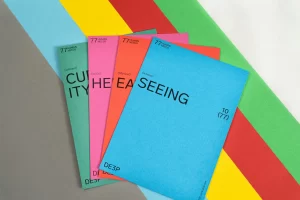
Sensory integration education is an essential component of helping individuals with sensory processing disorders and needs. This educational approach focuses on how our sensory systems work together to support our daily activities and interactions. Sensory integration education helps children understand and manage their sensory inputs, improving their ability to engage with their environment effectively.
What is Sensory Integration?
Sensory integration refers to the neurological process by which our brains organise and interpret sensory information from our bodies and the environment. This process enables us to respond appropriately to sensory inputs, allowing us to function effectively in our daily lives.
The concept of sensory integration was developed by Dr A Jean Ayres, an occupational therapist and neuroscientist, in the 1970s. Her work laid the foundation for understanding sensory processing disorders and developing effective therapeutic interventions.
Sensory Processing Disorder and Autism
Children with sensory processing disorder (SPD) or autism spectrum disorder (ASD) often experience significant sensory integration difficulties. These difficulties can manifest as hypersensitivity or hyposensitivity to sensory stimuli, leading to challenges in education or everyday activities.
Sensory integration disorder and autism frequently overlap, requiring specialised approaches to address these sensory needs effectively. Recognising and addressing sensory disorder symptoms is crucial for supporting these children.
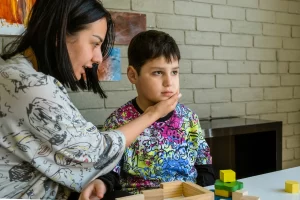
Sensory Modulation and Sensory Overload
Sensory modulation refers to the brain's ability to filter and prioritise sensory information. When this process is disrupted, sensory overload can occur, causing individuals to feel overwhelmed by sensory inputs.
A sensory overload test can help identify specific triggers and inform the development of tailored interventions to manage these responses. Understanding and addressing sensory modulation issues is a key component of sensory education.
Sensory Integration Training
Sensory integration training is designed to help individuals with sensory processing issues improve their ability to process and respond to sensory inputs. This training involves structured activities and therapies that target specific sensory systems, enhancing overall sensory processing capabilities.
Sensory Therapy Techniques
Sensory therapy techniques are integral to sensory integration training. These techniques involve various activities and exercises that help children improve their sensory processing skills. Here are some common sensory therapy techniques:
Vestibular Activities
These activities help with balance and spatial orientation, which are crucial for children with vestibular dysfunction. Examples include swinging, spinning, and balancing exercises.
Proprioceptive Exercises
Proprioceptive activities enhance body awareness and motor control. Activities such as jumping, pushing heavy objects, and using resistance bands are beneficial for children with proprioceptive processing issues.
Tactile Experiences
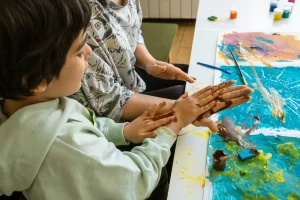
Engaging in different textures and tactile activities helps improve tactile processing and reduce tactile defensiveness. Activities such as playing with sand, clay, or textured toys can be very effective.
Oral Sensory Activities
Oral sensory exercises involve tasting different foods and using tools like chewable jewellery to improve oral sensory processing. These activities can help children with sensory eating disorders expand their food preferences.
Auditory Integration Training
This training involves listening to specific sounds or music to improve auditory processing skills. It can be particularly beneficial for children who are sensitive to loud or sudden noises.
Sensory Education in Practice
Implementing sensory education in practice involves creating personalised learning plans and providing ongoing support to children with sensory needs. At SEN Tutors, we focus on delivering customised sensory education to help each child thrive.
Customised Learning Programmes
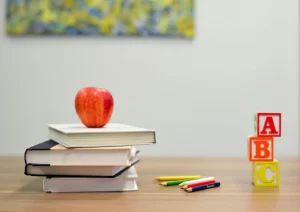
At SEN Tutors, we create personalised learning programmes tailored to each student's sensory needs. These programmes incorporate various teaching methods and resources to maximise learning outcomes. By focusing on individual strengths and areas for development, we ensure that each child receives the support they need to succeed.
Expert SEN Tutors
Our SEN tutors are highly qualified and experienced in working with students with diverse sensory or other educational needs. They employ empathetic and adaptive teaching strategies to ensure effective learning experiences. Our SEN tutors understand the unique challenges faced by children with sensory processing issues and are dedicated to helping them overcome these obstacles.
Flexible Sessions
We offer flexible scheduling to accommodate the busy lives of our students and their families. Whether through in-person or tutoring online sessions, we strive to make sensory education accessible and convenient. This flexibility ensures that each child can receive the support they need, regardless of their location or circumstances.
Progress Tracking and Reporting
Regular assessments and progress reports are integral to our approach, ensuring transparency and allowing parents and students to track advancements. By monitoring progress closely, we can adjust our teaching strategies to meet the evolving needs of each child.
Holistic Approach
Our focus extends beyond academics. We aim to foster confidence, independence, and overall well-being in our students, helping them thrive both academically and personally. Our holistic approach ensures that each child receives comprehensive support that addresses their sensory, emotional, and social needs.
Collaboration with Schools and Professionals
We collaborate closely with schools, therapists, and other professionals involved in a student's education to ensure a comprehensive support network. This collaboration helps create a cohesive support system that enhances the child's learning and development.
Strategies for Supporting Children with Sensory Needs

Some of the strategies our SEN tutors may use when working with and supporting a child with sensory needs include:
- Understanding the Sensory Systems: Having an awareness and understanding of the eight sensory systems and how these may affect some children.
- Being a Sensory Detective: Finding out what is going on for the child and what he/she needs.
- Sensory Environment Tours: Conducting a sensory tour of the environment with the specific child in mind, considering light, colour, sounds, patterns, surfaces, textures, reflections, and shadows.
- Observation: Closely observing the child to determine where he/she feels most comfortable, safe, and secure. Noticing places the child appears to avoid.
- Regulation Activities: Discovering whether activities are needed to ‘up-regulate’ or ‘down-regulate’ the child.
- Sensory Spaces: Providing a sensory space where the child can access their sensory needs.
- Sensory Timetables: Planning a sensory timetable/diet so the child has regular opportunities for the sensory input they require.
- Sensory Resources: Providing sensory resources to meet the individual needs and interests of the child.
- Choice of Activities: Offering ‘choices’ of sensory activities for the child to ensure they are fun and engaging.
- Teaching Self-Awareness: Teaching the child to recognise their individual sensory needs and to identify the sensory input they require, encouraging them to fulfil their needs independently.
- Structured Routines: Providing predictable structures and routines to support the child’s emotional well-being.
- Supportive Approach: Staying calm, patient, and positive, and supporting the child to access the sensory input they need.
EOTAS Packages and SEND Tutoring
SEN Tutors also offers Education Other Than at School (EOTAS) packages and SEND tutoring to provide comprehensive support for children who cannot attend traditional school settings. These services are tailored to meet the individual needs of each child, ensuring they receive a high-quality education regardless of their circumstances.
EOTAS Packages
EOTAS packages are designed for students who require an alternative to conventional schooling. These packages include personalised sensory education plans, tailored teaching strategies, and ongoing support to help students succeed in a non-traditional learning environment.
SEND Tutoring

SEND tutoring focuses on providing specialised educational support for students with special educational needs and disabilities. Our SEND tutors are equipped with the knowledge and skills to address a wide range of learning challenges, ensuring that each student receives the support they need to reach their full potential.
Supporting Sensory Needs Autism
Supporting sensory needs autism involves understanding and addressing the unique sensory challenges faced by children with autism. Sensory education plays a critical role in helping these children manage their sensory inputs effectively.
Sensory Eating Disorder
Children with autism often face sensory eating disorders, where certain textures, colours, or temperatures of food can be distressing. Sensory therapy can help them gradually expand their food preferences and improve their eating habits. By addressing sensory eating disorders, we can ensure that children with autism receive the nutrition they need for healthy development.
Sensory for Autism
Providing sensory support for autism involves creating a sensory-friendly environment and offering activities that help children manage their sensory inputs effectively. This support can significantly improve their quality of life and ability to participate in daily activities.
Sensory Spaces
Creating a designated sensory space allows children to retreat and regulate their sensory experiences. This space can be equipped with calming tools like weighted blankets, sensory toys, and soft lighting. A sensory space provides a safe haven for children to manage sensory overload and find comfort.
Sensory Timetables
A sensory timetable ensures that children receive regular sensory input throughout the day, helping them stay regulated and focused. This structured approach to sensory education helps children with autism manage their sensory needs more effectively.
Sensory Resources
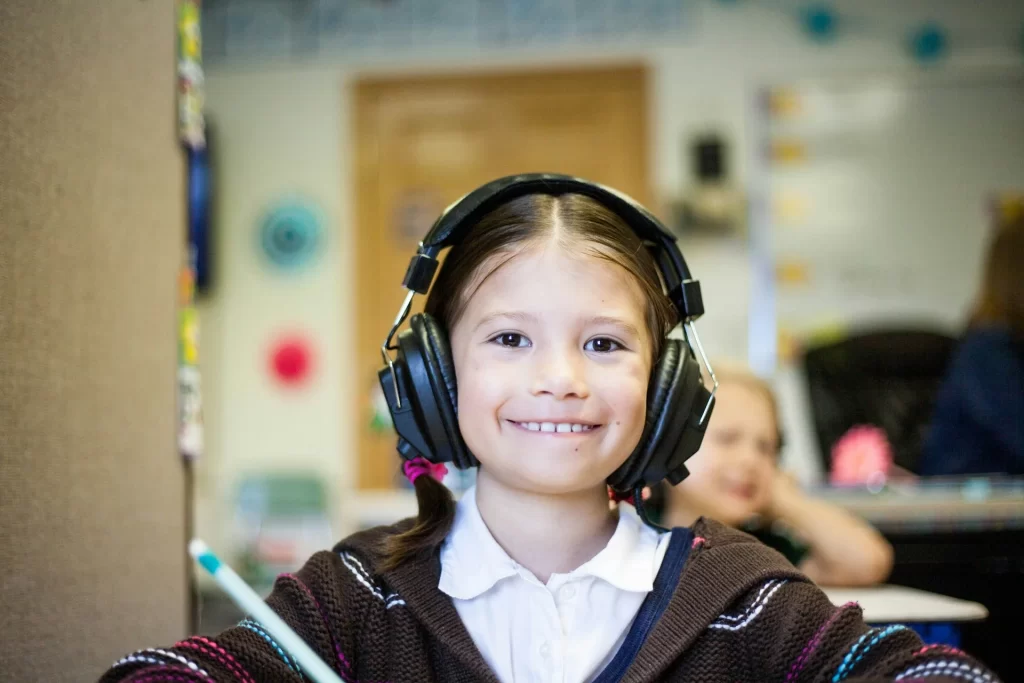
Providing sensory resources, such as fidget tools or noise-cancelling headphones, helps children manage their sensory needs independently. These tools empower children to take control of their sensory experiences and enhance their ability to cope with challenging environments.
An autism EHC plan would include many tools and resources necessary for your child to succeed.
Conclusion
Meeting sensory health needs is integral to promoting the overall well-being and quality of life for individuals with sensory differences. At SEN Tutors, we are committed to providing comprehensive and empathetic support to children with sensory challenges. Our personalised approach ensures that each child's unique sensory experiences are respected and accommodated, enhancing their comfort and participation in daily activities.
For more information and to receive personalised sensory education services, contact SEN Tutors today. Based on your child’s needs, we match you with the best suited SEN teacher from our team for the best results. We offer both online and in-person sessions in Hertfordshire to support your child's unique sensory needs.
Get in Touch
Contact our friendly team to book a consultation. Our educational expert will discuss with you your child’s strengths, areas where support is needed.